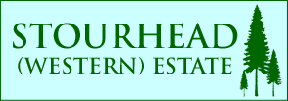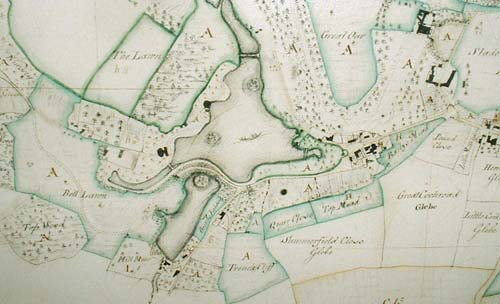

 Home
Products
Timber Info
Activities
Lettings
About
Contact
Home →
About →
History
Home
Products
Timber Info
Activities
Lettings
About
Contact
Home →
About →
History

This page is not intended to give an in depth background to Stourhead House and Gardens, but more an overview of the history of the whole Stourhead Estate, and particularly Stourhead (Western) Estate, the portion still controlled by the Hoare family. Visit stourtonhistory.org for general village history and pictures.
The basis of the Stourhead Estate is the manor of Stourton, which had been owned by the Stourton family since before the Norman conquest. They were sufficiently wealthy in the middle ages to maintain a deer park. The first Lord Stourton was enobled by Henry VI in 1445, and the family were prominent for the next century or so. The family fortunes took a turn for the worse after the 8th Baron was hung with a silken rope for the murder of the two men. The Stourtons' land was confiscated, although later restored. However their wealth dwindled, and they sold the manor of Stourton to Henry Hoare in 1720.
With newly earned banking riches to spend, Henry was not intending to live in the rambling, draughty medieval Stourton House/Castle, which he pulled down to make way for a ground breaking modern Palladian house. His son (another Henry, nicknamed "The Magnificant") created the landscape garden, and also started a huge tree planting programme in the wider landscape. The estate grew slowly as more land was bought. In particular, Richard Colt Hoare (Henry the Magnificent's grandson) bought the manor of Bonham which contained much of what is now the Western estate. Colt Hoare continued the afforestation, mainly planting on enclosed common land, itself formerly part of the Forest of Selwood. He showed an early appreciation of the value of growing conifers for timber.
 Extract from 1785 RCH map
Extract from 1785 RCH map
Colt Hoare's huge sweep of interests included local history, ancient history, archaeology, scientific farming and forestry. Latter generations may not have had such academic pursuits, but forestry and trees remained a major interest. New species were introduced, both as decorative features in the pleasure gardens and for timber production in the woods. The last owner of the whole estate, Henry Hugh Arthur Hoare (HHAH), was responsible for setting the direction of forestry for the 20th century, starting widespread planting of Douglas Fir in 1903.
By the time HHAH took over in 1894, the estate was retrenching. Parcels of land scattered over the West Country were sold off, and some extra land contiguous with the main estate was pruchased. HHAH's only son was killed in the Great War, leaving him without a direct heir. By the time of the Second World War, maintaining a house and gardens such as Stourhead was looking increasingly unrealistic. In 1946 he gifted the house, gardens and 2300 acres, mainly the better arable land, to the National Trust.
He left the rest of the estate, comprising the majority of the woodland and some grassland, to his cousin Henry Peregrine Rennie Hoare. Rennie was an enthusiastic forester, improving the conifer plantations and introducing new species such as Western Red Cedar and Chilean Beech. His son Henry bought Bonham Farm from the National Trust, and expanded the woods with a new broadleaved plantation on Pen Ridge. He also gave up in-hand farming, putting all the farmland onto some form of tenancy. Soon after Henry's son Nick took over in 1997, he started a full scale conversion of almost all the woods to Continuous Cover Forestry. He also invested in a small sawmill to make best use of timber of high value to a bespoke market.